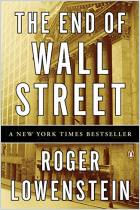
Recommendation
As economies develop, debt plays an ever-greater role in supporting consumption and growth. Banks now rely heavily on selling the loans they extend, so hiccups in the securitization markets can lead to abrupt slowdowns in lending. Securitization was once an esoteric part of Wall Street, of interest only to financial types, but it’s now critical for the economy’s health. getAbstract recommends this innovative analysis by economist Alyssa G. Anderson on why securitization markets failed in 2008 and how to reduce the risk of a recurrence.
Summary
About the Author
Alyssa G. Anderson is an economist with the Board of Governors of the Federal Reserve System.
Learners who read this summary also read
Book
Book
Book


















Comment on this summary or 开始讨论